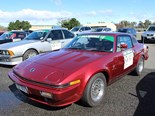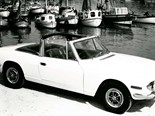Triumph TR8 (1979-81) - Buyer's Guide

















|

|

|

|

|

|

|

|
The short-lived Triumph TR8 finally provided a Triumph sports car with serious performance but check carefully for authenticity if it's on your menu
From Unique Cars #261, Jun/Jul 2006
Triumph TR8 1979-81
The TR6 that was replaced in 1975 by the four-cylinder TR7 was without doubt a flawed and old-fashioned design. That said, it maintained a heritage of open-topped TRs that originated in the early 1950s. Its demise came at a time when cutting costs and component sharing were the driving force behind Leyland product planning, leading enthusiasts to fear for the future of their once-proud brand.
Yet, waiting in the wings but delayed by constant strikes, lockouts, bickering and bloody-mindedness was a V8 version of the TR7 that would make its appearance more than three years after the four-cylinder.
A batch of 150 cars carrying the ‘TR7 V8’ designation had been built during 1977 but one of Leyland’s now legendary strikes ended the attempt to bring the model to market for 1978.

Two years on and after shifting production to the Rover plant at Solihull, North American buyers were finally granted their first glimpse of a Triumph sports car that offered some serious performance attributes. Its tenure, sadly, was destined to be short-lived.
| Read next: 1980 Triumph TR8 review
The TR8 that appeared on the North American market in July 1979 used the all-alloy 3.5-litre V8 motor that had been powering Rovers since 1966 and provided the basis for Leyland Australia’s 4.4-litre version. Most of the initial build cars came with dual Zenith Stromberg carburetors – only those sold into emission-conscious California using fuel injection from the outset. Early TR8s were also available only in Coupe form – the much-admired convertible not reaching the market until October of their introductory year.
Development of the TR7-8 design had been the responsibility of Spen King, whose other projects included the SD1 Rover and Range Rover, with styling by BL designer Harris Mann. Initially, the car was intended to use an independent rear suspension like earlier TRs from the 1960s but King, according to Graham Robson’s authoritative work Triumph TRs – The Complete Story, favoured a good live axle set up over a "mediocre independent design". It was also cheaper.
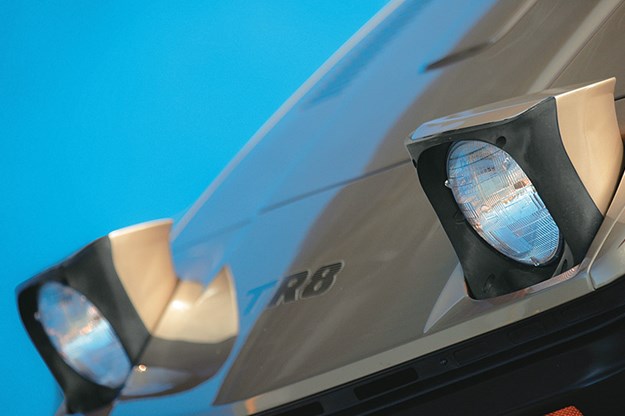
Features of the production TR8s included standard power steering and five-speed manual or three-speed automatic transmission. The wedge-effect styling wasn’t to everyone’s taste and the trim in very ’70s tartan-insert cloth dated even faster than the sheet metal. Interior space and overall practicality were high on the list of positive attributes.
All but around 300 of the TR8s made were convertibles. This decision reflected the preference of US buyers for open-top sports cars – especially since their domestic manufacturers had virtually forsaken the soft-top – but also to maximise the viability of the open-top TR7.
While the cars were never officially sold into the British market – except for fewer than 150 pre-production RHD examples that were marketed via the ‘back door’ to selected owners – eight-cylinder TRs were rallied with moderate success. One of the so-called TR7 V8s came to Australia and was briefly campaigned by Colin Bond.
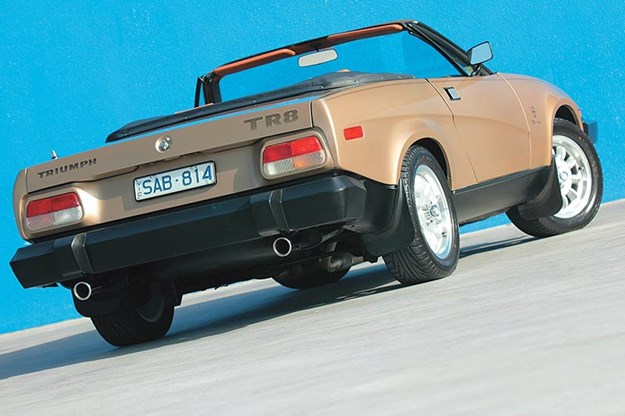
Leyland couldn’t make money on anything during the early 1980s and low-volume sports cars were first in line for ‘rationalisation’.
Following the impact on V8 sales of increasing petrol prices and cost pressures that brought the TR8 into close competition with the $15,000 Chevrolet Corvette, sales forecasts became bleak and production ceased in October 1981.
ON THE ROAD
Building a car to satisfy the perceived demands of a North American market that would sacrifice precise roadholding in favour of a featherdown ride blighted the TR8’s chances from the outset.
The result was a car that elicited the following assessment from Road & Track’s 1978 evaluation: "The front end is rather soft, diving sharply under braking, and there is some rear axle tramp during cornering on bumpy surfaces."
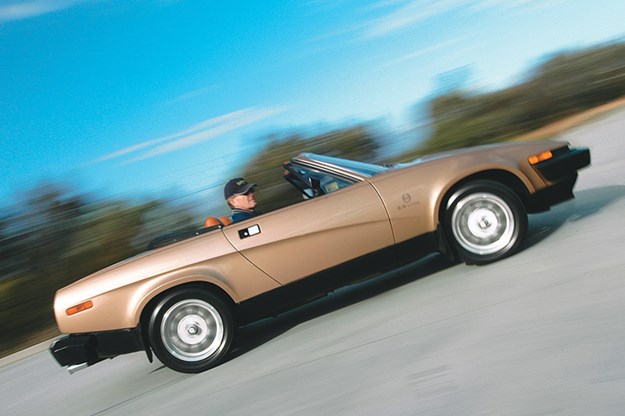
Omitting the ‘rathers’ and ‘somes’, you get the impression that the author might really have been trying to tell readers; "Warning! This thing is about as stable and predictable as a duck on a skateboard."
Figures generated by a fuel-injected Californian-specification car with 102kW were more than adequate for a market which had seen performance eroded by a ham-fisted approach to emission control. The US test recorded a 0-60mph (0-96km/h) time of 8.4secs and top speed of 190km/h while recording fuel consumption of 15.6L/100km.
A more recent assessment undertaken in the UK used one of the rare ‘pre-production’ cars with carburettors and none of the anti-smog plumbing specified by Californian legislators. It managed 60mph from rest in less than 8.0secs and was adjudged the preferable choice in a contest against two other Rover-powered models – the Morgan Plus 8 and TVR 350i.
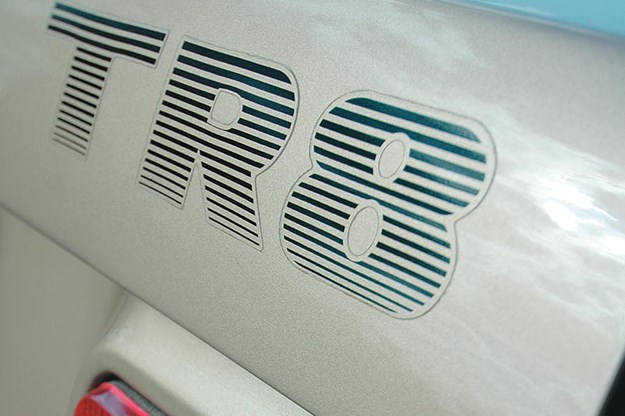
More significantly, the Brit-spec car with heavier front springs and Koni shock absorbers proved extremely responsive in bends – the test reporting high levels of adhesion and with oversteer replacing the softer-sprung US car’s almost endemic front end ‘push’.
Peter Kavanagh has owned his LHD-build TR8 since 2002 and can’t really say how his car might have handled when it was new.
"When I got it the front shocks had been replaced with Konis and it handles just fine," he said. "I’ve taken it to interstate club events (from Melbourne) and it is really comfortable to be in with plenty of boot space for a week away."
The Camino Gold car was delivered new into the US state of Oklahoma and its new price was $US12,500 including the optional air-conditioning.
"Finding parts to maintain and upgrade the car isn’t a problem," Kavanagh said. "This year I replaced the interior trim and used a kit from Rimmers in the UK then added leather seat inserts for a bit more style and durability."
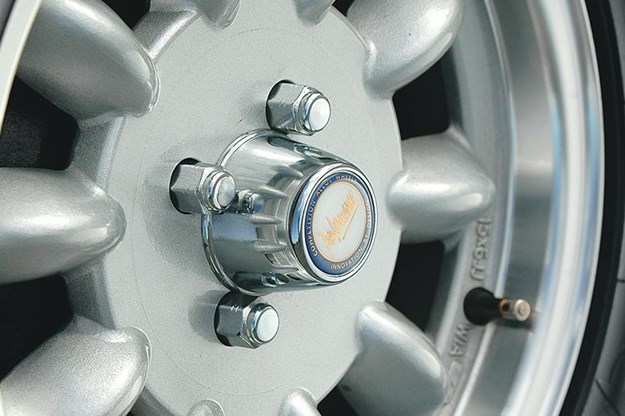
Replacing a worn steering rack – RHD racks are one part not available off the shelf – simply involved modifying a left-hand drive rack using parts from a Rover SD1. Upgraded water pumps are available and the Kavanagh car needed one since misaligned pulleys dating back to the car’s conversion to right-hand drive had damaged the original pump.
Comfort is a major TR8 attribute – the roomy cabin and decent levels of legroom complemented by a well-designed and easy-to-use hood.
BUYING USED
The absolute essence of any potential TR8 purchase is authenticity. ‘Clones’ based on the more common TR7 are worth 30-50 percent less than an authentic V8, so checking the identity tag that’s visible through the windscreen and the build plate in the left-hand door aperture is essential. A genuine US-market TR8 will show a ‘V’ or ‘Z’ as its third digit and another ‘V’ denoting a V8 engine as the fifth character. History is of equal significance and a vendor should provide documentation that confirms the car’s origins.
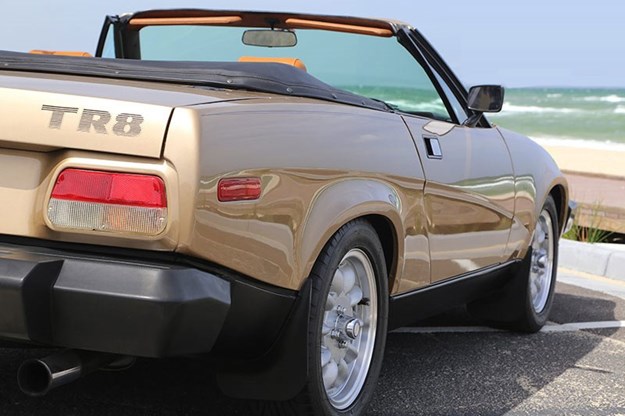
Once its pedigree has been established and talk turns to money, the international value of these cars becomes a factor. British sources revealed two very good examples of the UK ‘pre production’ cars at more than double a car offered in the US which looked well used and would require significant work to reach the standard of the British cars.
Peter Kavanagh believes that Australia is home to around 100 genuine TR8s. Contacting your state’s branch of the Triumph Sports Owners Association (www. tsoa.asn.au) would be a good starting point.
BUYER'S CHECKLIST
BODY & CHASSIS
Having dealt with the authenticity issue, TR8 buyers need to closely inspect the car’s underside. Most will have spent their early years in the Northern Hemisphere and underbody rust can be expected. Check also the lower section of the firewall, wheelarch lips for filler and the boot floor. Bumpers are easily damaged and could be expensive to replace. Make sure that the pop-up headlamps operate quickly and correctly and that the doors fit and close properly. The hood on convertible cars needs to be inspected for deterioration as replacements – made by Tickford – are worth between $600-$1000*.
(*as at 2006)

ENGINE & TRANSMISSION
The all-alloy Rover V8 has a litany of potential problems, most of which can be controlled by scrupulous maintenance. Overheating leads to cracked cylinder heads and disintegrating piston rings, so avoid any car with signs of oil contamination or that blows more than the odd puff of exhaust smoke. Stained carburettors and/or a strong smell of fuel under the bonnet signify leaks from the high-mounted carbs that are a common cause of Rover V8 engine fires. The gearbox is well-matched to its task and durable.
SUSPENSION & BRAKES
Sagging front suspensions, excessive negative camber and wear to the inside edges of front tyres all signify front-end work that’s overdue. All wearing parts are available and relatively cheap. Components required for an upgrade to ‘British’ suspension specification – new springs, shock absorbers and appropriate bushes – will cost around $1500*. Peter Kavanagh reports that, after 60,000km the brake rotors fitted to his car are only half worn.
(* as at 2006)
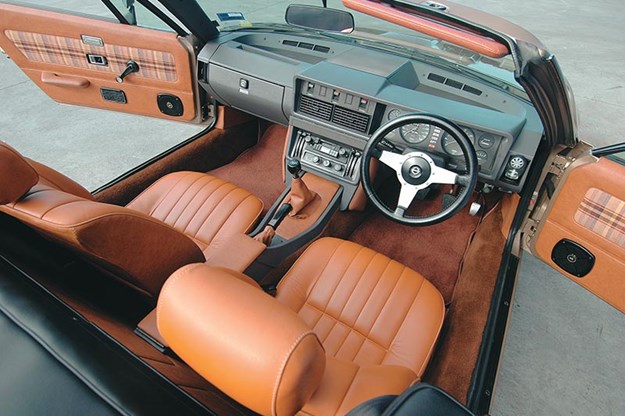
INTERIOR & ELECTRICS
Electrical faults when the TR8 was new were generally due to poor build quality but age will now be affecting items like the column control stalks which aren’t available new and dash switches which are. Replacement seat covers in a limited colour range are available from British-based Rimmer Brothers, as are new carpets and door trims.
Triumph TR8 specs
NUMBER BUILT: 2497 (inc. 150 RHD) – 1979-81
BODY: steel, unitary construction coupe and convertible
ENGINE: 3.5-litre all-alloy V8 with overhead valves and twin carburettors or fuel injection
POWER & TORQUE: 98kW @ 5000rpm, 223Nm @ 3200rpm (carburettor, US-specification)
PERFORMANCE: 0-60mph (96km/h) – 8.4secs. 0-400m – 16.4secs (carburettor, US-specification)
TRANSMISSION: five-speed manual or three-speed automatic
SUSPENSION: Front – independent with struts, coil springs and anti-roll bar. Rear – live axle with coil springs, trailing arms, telescopic shock absorbers and anti-roll bar
BRAKES: disc front, drum rear with power assistance
WHEELS & TYRES: 13 x 5.5 alloy, 185/70H/13 radial
CLUB CONTACT: Triumph Sports Owners Association
www.tsoa.asn.au
Unique Cars magazine Value Guides
Sell your car for free right here
Get your monthly fix of news, reviews and stories on the greatest cars and minds in the automotive world.
Subscribe

.jpg)







